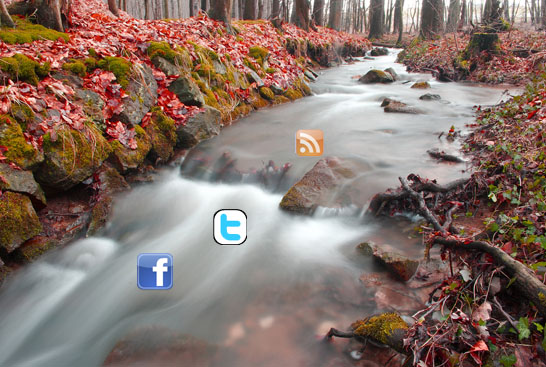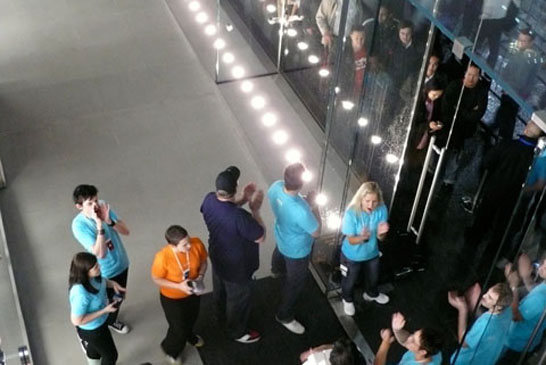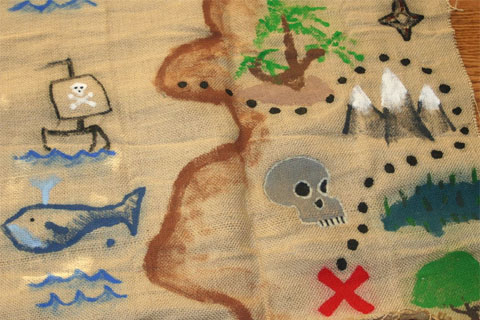
The social distribution system is a key aspect of why the web is becoming more about people and ideas and less about content and its static-object, connected-to-places (pages/sites) form…
I have had this post floating around in my head for literally about a year, but it hasn’t come out in written form until today. When it started, in my head, it was all about the fact that content wants to be independent of place or platform. Or, more specifically, that content should be “consumable” where and how the consumer wants to consume it. But, today the concept bouncing around in my head has gotten deeper and more complex. And, it keeps morphing…hence, perhaps, why it has taken me so long to write this.
The idea that we should not have to go to a web site to consume content seems somewhat obvious today, but it was a very short time ago that we needed to do exactly that. The advent of RSS and widgets that could pull content or functionality into any site or any online medium (e.g. start pages like iGoogle or social apps on Facebook, Myspace, or Open Social, etc.), however, meant that people could consume out at the periphery, without making them come to your site. This also meant that when your “stuff” was placed somewhere on the periphery, you could reach more people through serendipity. If someone liked your stuff enough to embed it in their “place”, their people could discover it and you. This was a big reason why social apps first took off, because their very use was a viral engine that connected to their social graph.
As this trend coincided with the advent of social sharing mechanisms like Del.icio.us, Digg, etc., and the attendant “share this” buttons, the isolated act of serendipitous discovery on the web became an ongoing flow of stuff. The web of places and destinations became the web of the stream.The nature of how we discovered or found stuff and gave it our attention had changed again.
The early web was all about browsing and hence about NAVIGATION. In this phase, the big players were the portals, like Yahoo, Lycos, etc., because they provided the navigation to get to the rest of the web. The next stage was about self-driven discovery and hence was all about SEARCH. Google figured out how to organize the content of the web by creating a proxy for the recommendations of the wide community via links to pages and their algorithm for assigning contextual authority to content. This stage, however, was still fundamentally about the location web and organizing pages and places.
Once we entered the content distribution and syndication phase, the construct changed again from BROWSE and SEARCH to DISCOVER and SUBSCRIBE. The acts of top down syndication and bottom up sharing fundamentally shifted us from LOCATIONS to STREAMS. We were no longer the ones moving from place to place to consume the content. It was now the content itself that was moving in a stream that could flow over or around us as we liked. If we wanted to ensure that a stream flowed past our island, we SUBSCRIBED to that feed.
At the same time that we began to subscribe to feeds, social networks started cranking up and created a whole new type of feed — the ever-changing STATUS of those on our “social graph.” What was previously a flow of articles or artifacts became a flow of comments, ideas, and links to other pieces of content.
This powered the disconnection of CONTENT from LOCATIONS even more and created a further meta layer for the exchange of ideas. No longer did you need to PUBLISH your thoughts, you could simply declare them out loud in a variety of ways. And, as people declared their thoughts, other people began to talk back and respond, in comments and social responses, and to pass ideas along by re-tweeting statements on Twitter and re-posting them in other spaces. This most recent shift completed a move from SUBSCRIBING to the acts of FOLLOWING and DISCUSSING. This last step is key.
John Borthwick wrote a pivotal piece on his blog last Spring which highlighted this shift in the flow of content called “The Rise of Social Distribution Networks.” The key word in the title is SOCIAL. The key take away (for me anyway) in that article and across my thinking on these concepts this year is that PEOPLE DRIVE THIS THING. What started as a digital printing press (hence “Movable Type”) focused on THE STUFF, has really progressed to be about ideas and the people who express them, respond to them, curate them, and pass them along. The most profound (or interesting, funny, etc.) of them get passed the furthest along the graph and have the greatest impact. This highlights what Mike Troiano of Holland-Mark talks about when he says that “the brand is the response, not the stimulus.” Ideas with the best response spread the most and gain the most currency. Producers of content, or products or services, all need to heed that concept within the framework of the web.
People who don’t “get” Twitter think of it as a communication platform or as “micro-publishing.” It is even generically referred to as “micro-blogging.” But that misses the point. Even the social platforms themselves have seen the need to go “location independent” via APIs, aggregators, etc. Once you move beyond thinking of the web and its tools as a set of PLACES and a way to COMMUNICATE, you can see it more clearly for what it has become: a stream of ideas that flows via social connections.
The implications of that reality for businesses and marketers we’ll get to another time…
Original photo by asphericlens.



